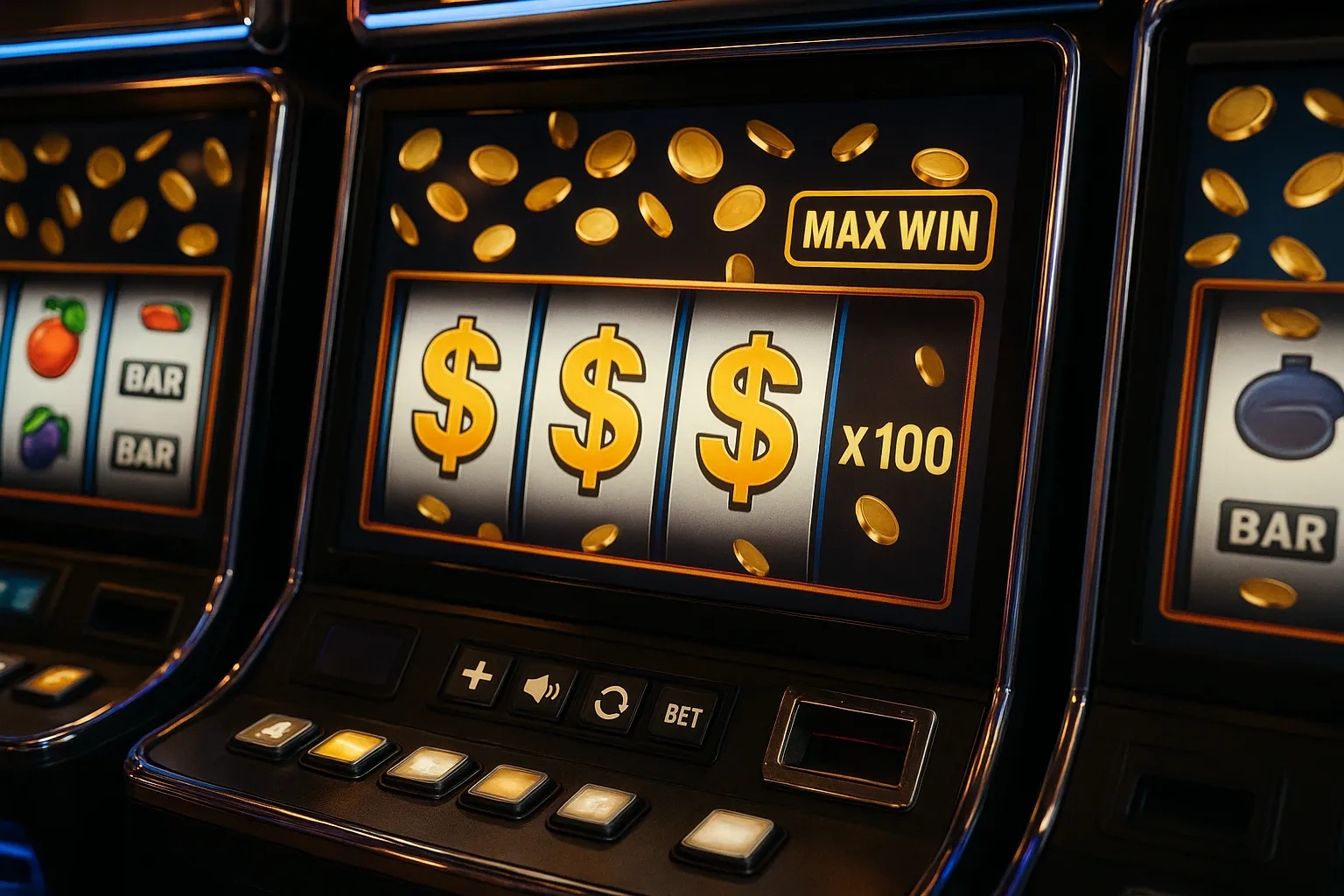Some slot games catch our attention with massive jackpot figures and multi-million-dollar dreams. Yet, you’ll also find titles that cap the biggest possible payout at a few thousand times your bet. At first, it might feel disappointing. But there’s a sound strategy behind these “low max win” designs. Having worked in casino content creation for years and spent many nights spinning digital reels, I’ve noticed how these games shape player behavior, manage risk, and fit into the broader gambling ecosystem.
Understanding slot max wins
Every slot game advertises two headline figures: its Return to Player (RTP) and its maximum win. The RTP tells you the average rate of return over the long run, while the max win defines the highest payout you can land on a single spin or within a bonus round. High-limit slots might promise 10,000× or 20,000× your stake—but low max win titles cap at 1,000× or even 500×. Both types can share the same RTP. That’s because RTP is about averages across millions of spins, whereas max win is about the rare, peak event.
When I first encountered a low max win slot, I assumed it was a budget title. But after diving into design discussions with developers, I learned it’s less about cost and more about balancing excitement with sustainability. Instead of chasing the improbable mega-jackpot, these slots focus on consistent engagement and controlled risk.
Why designers choose low max wins
When you explore offerings at non UK licenced casinos, you’ll notice a wide spectrum of titles—some tailored to high-rollers, others aimed at casual players. Designing a slot with a modest top payout is rarely accidental. Several deliberate factors drive this choice.
Managing volatility
Volatility (or variance) measures how often and how big your wins can be. High-volatility games pay out massive prizes infrequently. Low max win slots generally fall into the low-to-medium volatility category. Wins arrive more often, but they’re smaller. From a developer’s viewpoint, this approach keeps players engaged with regular rewards rather than dry spells punctuated by rare windfalls.
Mathematical predictability
A capped top prize simplifies the mathematics behind the game’s engine. With a known maximum, it’s easier to structure bonus rounds, scatter mechanics, and free spins so that the theoretical RTP holds steady. This mathematical predictability reduces the risk of unintended payout anomalies and makes certification by regulators smoother.
Regulatory and licensing constraints
Different jurisdictions impose payout rules. Some regulators, especially newer or more conservative markets, favor games that won’t pay out extreme amounts that could alarm casual observers or draw negative headlines. A lower max win keeps the game’s profile modest and easier to audit, while still offering attractive RTPs.
Catering to casual players
Not every slot fan dreams of a million-dollar spin. Many players simply want to stretch their bankroll over multiple sessions, enjoy the graphics, and win enough to feel rewarded. Low max win games resonate with this audience. They strike a balance between thrill and longevity—letting players chase moderate but realistic jackpots.
The impact on player experience
When you choose a low max win title, you’ll sense a different tempo. Instead of waiting for the rare “big one,” you’ll enjoy a steadier cadence of wins. That can feel comforting, almost like a train that makes frequent stops rather than a nonstop express that might leave you stranded for hours.
In my own sessions, I’ve noticed that these games often feature bonus rounds with smaller multipliers but more frequent activation. The anticipation kicks in regularly, keeping my interest alive. And psychologically, frequent small wins trigger that dopamine boost, encouraging longer play without the emotional roller-coaster of huge losses followed by rare massive wins.
Real-world example: “Golden Grove”
Take “Golden Grove,” a hypothetical slot capped at 800× the stake. Its free spins bonus awards ten spins with a modest 2× multiplier. Hits land almost every third spin on average. The result? Players feel rewarded, even if they never hit the 800× cap. The studio behind it emphasized that average session length increased by 25% compared to their high max win titles.
Tips for players
If you’re exploring slots—whether at a glitzy London-licensed site or a more eclectic platform—consider your goals. Are you chasing adrenaline and the fantasy of a life-changing jackpot? High max win slots might be your thrill. But if you want steady entertainment, manageable swings, and a smoother journey, low max win titles deserve a place in your rotation. Here are a few pointers:
-
Check the volatility rating alongside the max win.
-
Read player reviews to gauge how often the bonus triggers.
-
Adjust your bet size so that even small wins feel meaningful.
-
Use session limits to keep play recreational and fun.
Conclusion
Designing slots with low max wins is a thoughtful strategy, not a cost-cutting mistake. By capping the top prize, developers can offer balanced volatility, predictable math, and regulatory compliance—all while catering to players who prefer frequent, moderate payouts. The next time you spin a low max win slot, appreciate the steady thrill it provides and understand that it’s engineered to keep you entertained game after game.




